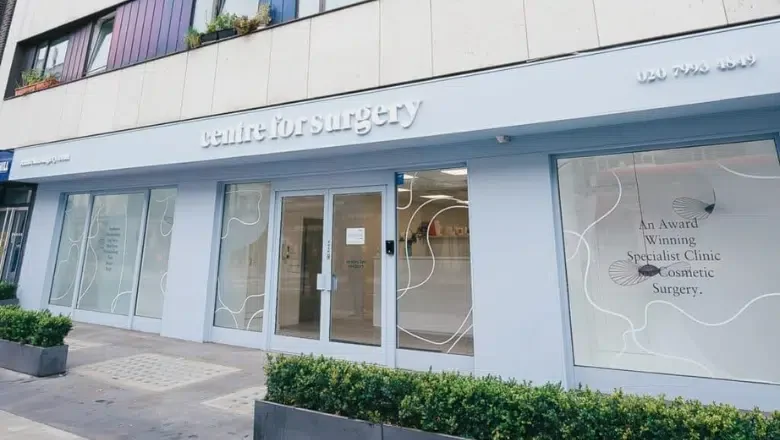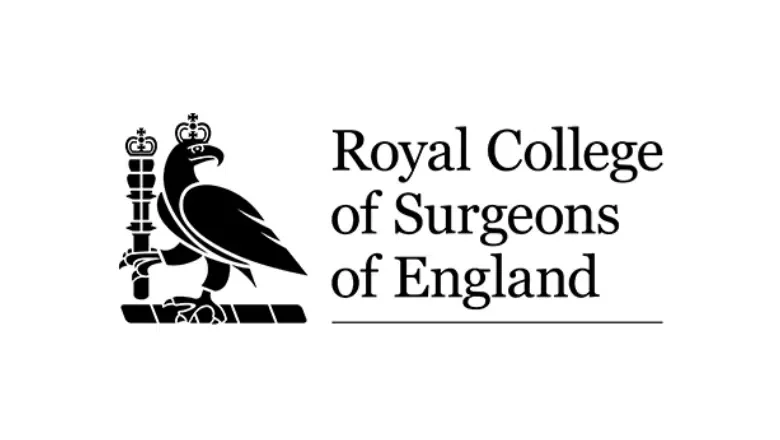Choosing the Right Size for Your Breast Implant
Are you considering getting breast implants and unsure about the size that would be best for you? This guide is here to support you in making an informed choice. It’s essential to remember that the ideal size for one person may not be the same for another. Finding the perfect fit for your body and preferences can be challenging, but don’t worry!
RELATED: 5 Ways to Get Natural-Looking Breasts
Your first step should be to arrange a meeting with a professional plastic surgeon, especially one from the Centre for Surgery in London. They will provide expert advice tailored to your unique needs. Only after this consultation will you be able to make a final decision confidently. It’s always best to get the opinion of an expert when considering such an important decision for your body.
Understanding How to Choose Your Breast Implant Size
When you’re thinking about breast implants, the decision isn’t solely based on the look you aim for. It’s a combination of multiple factors. To help you make the best decision, here’s a list of five essential aspects to consider:
Considering Your Health
Before deciding on the size, evaluating if you’re medically fit for the procedure is imperative. Conditions like recurring breast infections, sensitivity to silicone, autoimmune diseases, psychological concerns, or other health issues can affect both the surgery’s outcome and your recovery. It’s always recommended to have an in-depth discussion with specialists, ideally at a renowned centre like Centre for Surgery, to understand potential risks and the best choices for your health.
Your Body Shape and Size
The structure of your body, especially the chest area, is the first thing to consider. For instance, if you’re petite with a shorter stature, a high projection implant might be suggested by your surgeon. But if you’re taller with a broader frame, wider implants might be more suitable. It will complement the overall proportions of your body. Take into account aspects like the ratio of your torso to your hips, and whether you are long or short-waisted. It’s important to remember that what looks harmonious and balanced on one individual might look disproportionate on another. For example, larger implants could dominate the frame of someone with a slender build and shorter stature, whereas they might look more in balance on someone taller with broad shoulders.
The Influence of Age
As we age, our skin’s elasticity changes. Younger skin tends to be more resilient and flexible, adjusting more readily to changes in breast profile. This flexibility can reduce potential issues such as chest tightness or other post-operative complications. On the other hand, older individuals might see variations in skin texture and sagging, which could require complementary procedures like a breast lift or mastopexy to attain the look they desire alongside their implants.
Taking Your Lifestyle into Account
The activities you engage in daily can influence your choice. For instance, if you’re someone with an athletic lifestyle – perhaps you’re into marathons or high-intensity workouts – larger implants might pose challenges. They can affect your comfort and ability to engage in these activities. On the other hand, if your job involves more sedentary activities, like working long hours at a desk, the physical implications of larger implants might be less concerning. However, every lifestyle has its nuances, so weigh how implants of varying sizes might impact your daily life.
Your Personal Aesthetic Vision
Your personal preferences play a pivotal role. Everyone has a unique vision of how they want to look. Some might be seeking a subtle enhancement to achieve a more balanced body symmetry, while others might be envisioning a dramatic change for a more prominent and curvaceous silhouette. It’s essential to communicate your aesthetic aspirations clearly with your surgeon. The experienced team at Centre for Surgery can provide insights into what can be feasibly achieved, ensuring that your expectations align with the potential outcomes.
A Guide to the Popular Sizes of Breast Implants
Breast implants come in a variety of sizes, catering to different body types and desired outcomes. However, it’s crucial to understand the implications of each size, especially when it comes to your comfort and the potential for complications. Here’s a breakdown:
1. Range of Sizes:
- Silicone Implants: These are available in a range from 100ml to 800ml. Silicone implants are popular because of their natural feel and appearance.
- Saline Implants: While these can be overfilled up to around 1000ml, they aren’t as commonly used in the UK. They offer adjustability in size but may not provide as natural a look and feel as their silicone counterparts.
2. Importance of the Base Width Diameter: Before deciding on a size, ensure that the base width diameter of the implant doesn’t exceed the width of your natural breast. Doing so ensures a natural fit and look and reduces potential complications or an unnatural appearance.
3. Popular Choices: The sweet spot for many lies in the 300ml to 400ml range. This range tends to offer an enhanced yet proportionate appearance for a wide variety of body types.
4. Feedback from Patients: It’s interesting to note that a substantial number of patients, around 80%, expressed a desire to have chosen a slightly larger size when reflecting on their decision a year post-surgery. In fact, when considering replacements, a common preference is to go up by 30-50ml.
5. Proceeding with Caution: While it may be tempting to go for larger sizes, especially above 450ml, it’s essential to approach with caution. Larger implants can be associated with a higher risk of complications. Some potential concerns include back pain, sagging, and a higher likelihood of requiring revision surgeries.
Understanding the Limitations of Relying on Bra Cup Size for Breast Augmentation
Often, when we think of enhancing our breast size through augmentation mammoplasty, a specific bra cup size flashes in our mind. “I want to be a C cup” or “I’ve always wished to be a D cup” are common aspirations. However, using a bra cup size as the primary measure for implant size has its pitfalls. Here’s why using a specific bra cup size as your benchmark might not be the best idea:
- Inconsistent Sizing Across Brands
- Every brand has its own set of sizing guidelines and standards. As a result, there’s a lack of uniformity. The same C-cup in one brand could translate to either a B or a D in another. So, when you say you want to achieve a specific cup size, which brand are you referring to?
- Not a Direct Measure
- Bra sizes primarily focus on the volume of the breast but don’t take into consideration other essential factors that implants impact, such as breast projection and width. Therefore, merely relying on a cup size doesn’t capture the holistic picture of what you might be aiming for in terms of appearance and feel.
- Variability in Perception
- Even if we hypothetically consider that bra sizes are consistent, a D cup on a taller individual with a broader frame might look much different than on someone shorter and more petite. In other words, the same cup size can have very different aesthetic impacts on different body types.
- Other Factors to Consider
- Beyond just volume, there are other factors to think about when considering breast augmentation. The shape of the implant, the placement (above or below the muscle), and the type of implant all play crucial roles in the final outcome. A specific cup size won’t encompass all these considerations.
RELATED: C Cup Boobs – Getting the Perfect Breast Augmentation
Breast Implants: Understanding Measurements Beyond Bra Cup Sizes
It’s a common misconception: many people believe breast implants are measured in terms of bra cup sizes. However, that’s not how it works.
Breast Implants Use Cubic Centimetres (ccs)
Yes, you read that right! The measurement unit for breast implants is not your typical bra cup size but cubic centimetres, often abbreviated to ccs. Here’s why this distinction matters:
Consistency and Clarity
Bra sizes, unfortunately, are not universally standardised. The measurements can differ considerably depending on the brand or even the region. By contrast, cubic centimetres are a consistent measure recognised globally. So, whether you’re discussing implant sizes in London or Los Angeles, 300 ccs will always be 300 ccs.
Bra Size Variability
Imagine the confusion if we relied on bra sizes. A D-cup in Brand A might only be equivalent to a C-cup in Brand B. With ccs, such discrepancies are eliminated, and you’re always certain of the size.
Range of Options
When it comes to implant sizes, there’s a vast array of choices. Depending on your aesthetic goals, body type, and other factors, you might opt for an implant as petite as 100 ccs or as voluminous as 800 ccs. This fine granularity of choice ensures that everyone can find a size that suits their unique requirements.
Bespoke Recommendations by Surgeons
When you consult with a surgeon, they’re not thinking about bra cup sizes. Instead, they’ll evaluate your anatomy, consider your desired outcome, and then make a recommendation in ccs. This precise measure allows for a more tailored approach to suit your specific body frame and goals.
The Downside of Choosing Excessively Large Breast Implants
Selecting the right size for breast implants is crucial. While many aspire for a more voluptuous look, it’s essential to be aware of the potential complications and challenges associated with choosing a size that might be too large for one’s body frame. Here’s a detailed exploration of the issues one might face with overly large implants:
Unnatural Appearance
Large implants can result in breasts that appear disproportional to the rest of the body. This can lead to an imbalance in aesthetics, making the enhanced breasts stand out oddly and look artificial.
Lifestyle Restrictions
The added weight and volume of large implants can hamper day-to-day activities. Activities like jogging, certain gym exercises, or even simple tasks like bending and stretching can become uncomfortable or even painful.
Clothing Challenges
With a significantly larger bust, finding the right attire becomes a challenge. You might encounter situations where a dress fits perfectly around the chest but is too loose around the waist or hips. Moreover, specialty bras might be needed to support and accommodate the increased size, which can be both expensive and hard to find.
Perceived Increase in Body Weight
Large implants can make an individual appear bulkier. This is not just a visual effect; the actual weight of the implants can also add to one’s overall body weight.
Potential for Tissue Damage
The added weight and pressure of large implants can stress the underlying breast tissue. Over time, this can lead to thinning of the tissue and might necessitate earlier implant replacements than typically required.
Risk of Sagging
The gravitational pull on the added weight can lead to premature sagging or drooping of the breasts. As a result, individuals with oversized implants often find themselves considering additional procedures like breast lift mastopexies to maintain a youthful and elevated breast position.
Skin Stretching and Aging
Every skin has its elasticity limit. Large implants can stretch the skin beyond its natural capacity, leading to issues like wrinkling, stretch marks, and sagging. Over time, this stretching can make the skin look prematurely aged.
Guide to Determining Your Ideal Breast Implant Size
Finding the right breast implant size is a nuanced process that demands careful consideration and collaboration between you and your surgeon. Every person’s body and preferences are unique, so it’s essential to approach the decision with a strategy tailored to your individual needs. Here are some recommended steps to guide your decision-making:
- Test with Breast Implant Sizers:
- Hands-on Experience: Before making a decision, get a feel for how different implant sizes look and feel on you. This involves trying on various sizers that simulate the effect of the implants.
- Living with the Sizers: Your surgeon might recommend wearing these sizers continuously for several days, allowing you to experience the change in various situations — from dressing up for an event to doing your daily workout.
- Realistic Expectations: Trying these sizers isn’t just about appearance; it’s about functionality and comfort too. A week’s trial can offer invaluable insights into how you’ll adapt to the new size in your daily life.
- Leverage Modern Technology with 3D Imaging:
- Personalised Visualisation: Modern technology offers tools that can project potential outcomes tailored to your body. 3D imaging systems, such as Crisalix or Vectra, give you a virtual preview of your post-surgery appearance.
- Compare Different Outcomes: These tools often allow for side-by-side comparisons of various sizes and profiles, enabling you to make an informed choice about what feels right for you.
- Boosted Confidence: Seeing a potential post-operative result can be reassuring. It helps align your expectations with reality and ensures you and your surgeon are on the same page regarding the desired outcome.
- Open Dialogue with Your Surgeon:
- Rely on Expertise: Your surgeon’s experience is invaluable. Discuss your goals openly, and listen to their recommendations based on countless similar procedures they’ve undertaken.
- Consider Long-Term Impact: Remember to discuss not just immediate results, but also the long-term implications, like how aging might affect the appearance and whether there are potential risks tied to specific sizes.
- Seek Feedback but Trust Your Instincts:
- Peer Opinions: While friends and family can offer perspectives, remember that the final decision should be based on what makes you feel confident and comfortable.
- Personal Satisfaction: The primary goal should be your contentment with the results, not adhering to someone else’s ideal of beauty.
Factors Influencing the Outcome of Breast Implant Surgery
Choosing the right size for breast implants is just the tip of the iceberg when it comes to determining the final look after breast implant surgery. A myriad of other factors play significant roles in sculpting the end result. Let’s dissect each one to provide a comprehensive understanding:
Implant Shape: The Building Blocks of Appearance
-
- Round Breast Implants:
- Popularity: These are the most commonly used implants.
- Myth Debunked: Contrary to popular belief, round implants can provide a natural look when placed aptly.
- Advantages: They offer fuller cleavage, adapt to a natural breast shape, have a lower risk with less textured surfaces, and come with a lower revision rate.
- Anatomical Breast Implants (Teardrop):
- Purpose: They are designed to emulate the natural teardrop shape of a breast.
- Benefits: Particularly useful for correcting minor breast sagging, deficiencies in the lower breast pole, and for those prioritising a highly natural appearance.
- Round Breast Implants:
RELATED: Silicone vs Saline Breast Implants
Texture of the Implant Surface: More Than Just Feel
-
-
-
- Types: Implants can be smooth, textured, or covered with polyurethane.
- Safety: Nano-textured and micro-textured implants, owing to their low surface roughness, are usually considered safer.
- Types: Implants can be smooth, textured, or covered with polyurethane.
-
-
Incision Type: The Gateway to Placement
Making incisions is necessary for implant placement, and their location can influence the appearance and healing process:
-
- Inframammary Fold (IMF): Concealed within the natural fold under the breast, this is a preferred method for many due to its discreet nature.
- Periareolar: Strategically placed around the areola, the scar typically blends with the areola’s natural colour and shape.
- Transaxillary: Positioned within the armpit, this ensures the breast remains scar-free.
RELATED: Different Types Of Breast Augmentation Incisions
Implant Placement: A Key Decision in Determining Look and Feel
Where the implant sits in relation to the breast tissue and chest muscles significantly influences the final outcome:
-
- Subglandular Placement (Over the Muscle):
- Suitability: Generally advised for those with a good amount of natural breast tissue.
- Appearance: Can provide a fuller, more pronounced look.
- Submuscular Placement (Under the Muscle):
- Purpose: Ideal for those with limited breast tissue.
- Benefits: Offers a more natural slope and appearance, with less palpable implants.
- Dual Plane Placement: A hybrid approach.
- Technique: Combines both placements: the top half of the implant rests beneath the pectoral muscle, while the bottom half sits beneath the glandular tissue.
- Advantages: This technique capitalises on the best of both worlds, yielding a natural look especially for certain breast types.
- Subglandular Placement (Over the Muscle):
Guide to Understanding Breast Implants in the UK
Do you have questions about breast implant sizes? We’ve made things a bit simpler for you. Here’s a breakdown:
How can I find out the best breast implant size for me?
To find the perfect implant size, have a chat with a plastic surgeon. They’ll consider what you want, your body shape, and how you live day-to-day. Also, they’ll show you some cool 3D pictures to give you an idea of how you might look after the operation.
Which breast implant size do most people get?
In the UK, lots of folks choose implants between 300 and 400 ccs. This might look like a C-cup bra size. But remember, everyone’s different, and it’s all about what you’re comfortable with.
How do I pick the right size implant for my body?
Again, you’ll want to meet with a surgeon for this. They’ll consider everything from how you live your life to your body’s unique shape. They might also use tools like 3D images or even ‘trial’ implants to help you decide.
How big is one bra cup size in ccs?
A rough guide is that one bra cup size is about 175cc. But it’s not just about volume; things like where the implant goes, what it’s made of, and your own body shape can change things.
How big is a C-cup in ccs?
Normally, a C-cup is around 350 to 400 cc. But it’s just a rough guess. Many things can affect how a C-cup looks on different people.
And what about a B-cup?
For a B-cup, you’re probably looking at 250 to 350 cc. But remember, everyone’s different!
Can I get bigger implants after my first surgery?
Once you’ve recovered from your first surgery and your new implants have settled in, you might decide to go even bigger. Just check in with your surgeon first to make sure it’s safe.
How often should I get new implants?
Think of implants a bit like a car MOT. They don’t last forever. Ideally, you should look at getting them refreshed every 10 to 15 years.
Breast Augmentation at Centre for Surgery
Centre for Surgery is at the forefront of the cosmetic surgery industry in the UK, offering state-of-the-art procedures and care that focus on your individual needs and aspirations. Our skilled surgeons combine their extensive experience with the latest in medical technology, ensuring you achieve the desired results in a safe and nurturing environment.
For us, every patient is unique. Our team understands the intimate nature of breast augmentation and is dedicated to guiding you every step of the way. From consultation to recovery, your comfort, safety, and satisfaction are our top priorities.
What Our Patients Say:
Sarah, 34:
“I always felt self-conscious about my appearance. When I finally decided on breast augmentation, I wanted to ensure I chose the best. The team at Centre for Surgery was not only professional but also incredibly compassionate. My surgeon made me feel at ease, answered all my questions, and most importantly, the results were beyond my expectations!”
Riya, 28:
“After years of pondering over breast augmentation, I finally took the leap with Centre for Surgery. The support, care, and expertise I received were unmatched. From the moment I walked in for my consultation to my post-surgery check-ups, they made me feel like family. My confidence has skyrocketed, and I owe it all to the wonderful team here.”
Clara, 29 (Breast Reduction):
“I had always been uncomfortable with my chest, and it impacted every aspect of my life. Centre for Surgery provided a judgment-free zone where I felt safe and understood. The process was smooth, the staff were friendly, and I couldn’t be happier with my results. It truly has changed my life.”
Take the Next Step with Us
Your body, your choice. But remember, you’re not alone on this journey. Let Centre for Surgery be your trusted partner in achieving the look you’ve always desired. Reach out to us today, and let’s take the first step together.










